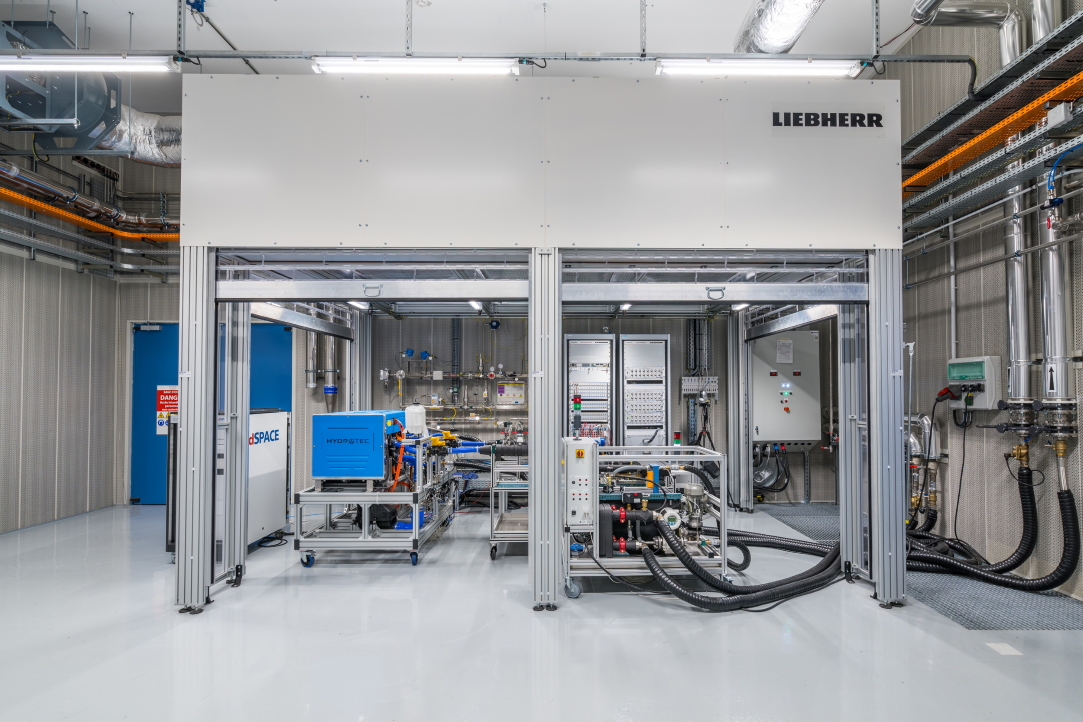Liebherr-Aerospace Toulouse is working on systems and equipment to reduce fuel consumption, but also to contribute, at its level, to more carbon-neutral aircraft. The equipment manufacturer recently acquired a hydrogen cell installed in its test center at the Toulouse site. This new investment in test facilities will enable Liebherr-Aerospace Toulouse to demonstrate the ability to generate electrical power, using fuel cells, to supply the major non-propulsive electrical systems of a new-generation single-aisle aircraft, while ensuring the thermal management of the whole (fuel cells and electrical systems).
A hydrogen bench at Liebherr-Aerospace Toulouse
Liebherr-Aerospace Toulouse is working on systems and equipment to reduce fuel consumption, but also to contribute, at its level, to more carbon-neutral aircraft.One emblematic project consists of using hydrogen as a fuel cell power source to generate sufficient electrical power, of the order of 400 kW, to supply all the non-propulsion systems of the next generation of aircraft. To carry out its activities, Liebherr-Aerospace Toulouse, with the support of the Direction Générale de l'Aviation Civile as part of the France Relance plan, is developing this power generation system.
To power the major electric non-propulsion systems of a single-aisle aircraft
To evaluate this solution in a representative environment, the company, with the support of the Occitanie Region, recently equipped itself with a hydrogen cell installed in its test center at its Toulouse site. This new investment in test facilities will enable Liebherr-Aerospace Toulouse to demonstrate the ability to generate electrical power, using fuel cells, to power the major electrical non-propulsion systems of a new-generation single-aisle aircraft, while ensuring the thermal management of the whole (fuel cells and electrical systems).
Accelerating the development of the necessary elements
Beyond these substantial investments dedicated to hydrogen, Liebherr-Aerospace Toulouse is also developing new systems and equipment that have less impact in terms of emissions, particularly CO2, and is collaborating with the entire aeronautical industry as well as academia to accelerate the development of the products needed for the next generation of carbon-free aircraft.
Découvrez cet article sur Air&Cosmos

